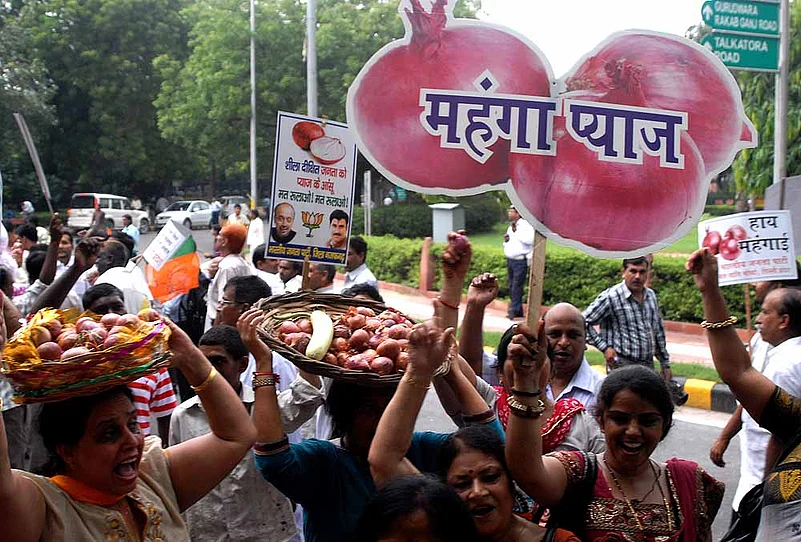Has the government taken its hands off the inflation problem and put it on the central bank’s table? So it would seem. What else can explain the apathy in improving infrastructure to reduce profiteering by middlemen between farmers and consumers? The policymakers’ belief is that tightening the monetary policy will bring inflation under check. They blame high inflation (the CPI climbed to 9.84 per cent last month, mainly due to high vegetable-fruit prices) on mismatch between demand and supply.
“The inflation problem has been there for four years. The food chain in India is very mismanaged and is of great political interest,” says Devinder Sharma, food and agriculture analyst. Rubbishing any notion of supply constraint, Sharma says the demand has not outpaced production to that extent. This is borne out by the continuing high level of post-harvest wastage of fruits and vegetables. Whatever the inflation numbers, it’s clear as day that people are grappling with onion prices that are over 300 per cent higher than last year’s.
Plentiful winter vegetables may have arrived in neighbourhood stores but vendors continue to charge consumers steeply. “This is the third time in two years that we are witnessing such steep onion prices. Production is not the problem but the supply chain is, as the demand is on expected lines. There simply is a huge amount of cartelisation and speculative trading,” says Prof Himanshu, Centre for the Study of Regional Development, JNU.
It is an issue that the Competition Commission of India took note of in a suo motu inquiry, which was scuttled. Warning signals of soaring onion prices were evident in February and March, yet 13 lakh tonnes of onions were allowed to be exported between April to September. Today the price of onion, a staple in poor homes where it’s often eaten with dry chappatis, is around Rs 60 a kg. Moreover, it’s unfortunate that the government too is hoarding millions of tonnes of cereals in the name of food security and adding to inflationary pressures.


























